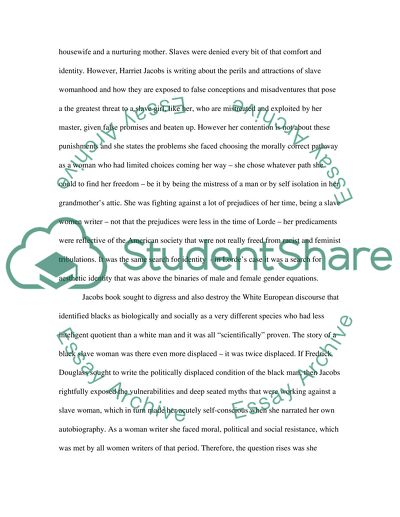Cite this document
(“Analysis of the Works of Harriet Jacobs and Audre Lorde Book Report/Review”, n.d.)
Analysis of the Works of Harriet Jacobs and Audre Lorde Book Report/Review. Retrieved from https://studentshare.org/literature/1524324-harriet-jacobs-and-audre-lorde
Analysis of the Works of Harriet Jacobs and Audre Lorde Book Report/Review. Retrieved from https://studentshare.org/literature/1524324-harriet-jacobs-and-audre-lorde
(Analysis of the Works of Harriet Jacobs and Audre Lorde Book Report/Review)
Analysis of the Works of Harriet Jacobs and Audre Lorde Book Report/Review. https://studentshare.org/literature/1524324-harriet-jacobs-and-audre-lorde.
Analysis of the Works of Harriet Jacobs and Audre Lorde Book Report/Review. https://studentshare.org/literature/1524324-harriet-jacobs-and-audre-lorde.
“Analysis of the Works of Harriet Jacobs and Audre Lorde Book Report/Review”, n.d. https://studentshare.org/literature/1524324-harriet-jacobs-and-audre-lorde.


